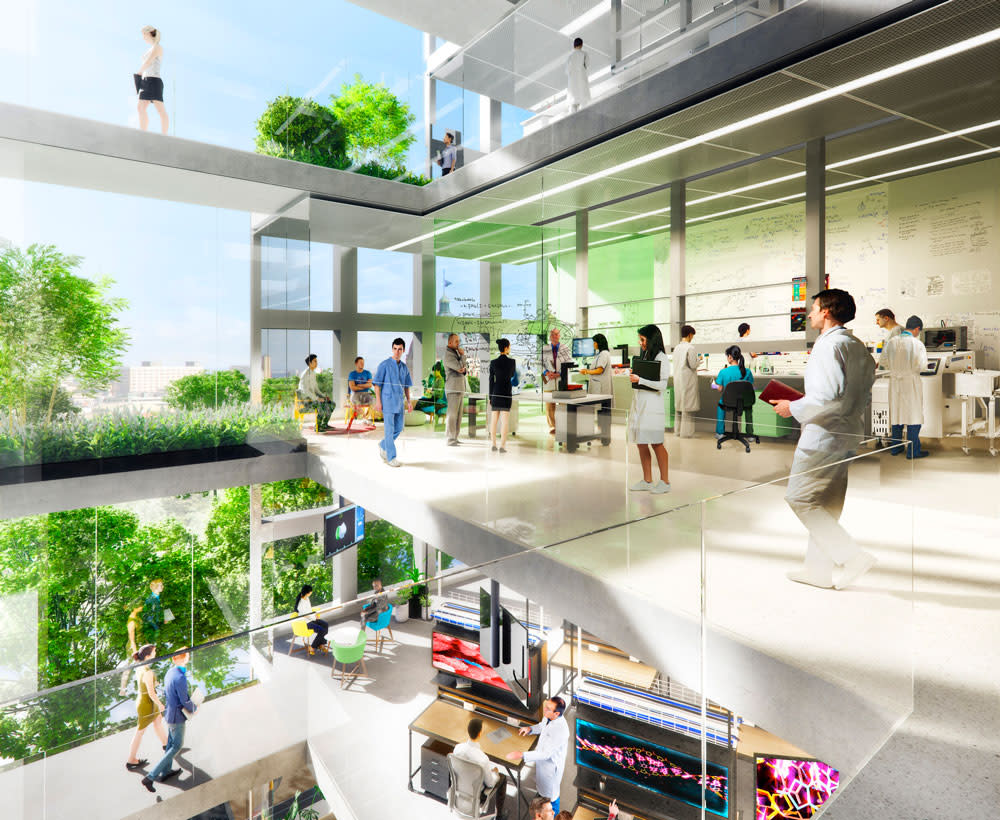Resources
Newsletter
Stay up to date and with the latest news, projects, deals and features.
Subscribe
Plans for a $200-million medical research facility opposite Carlton Gardens and the Royal Exhibition Building in central Melbourne have been given the green light.
The approved Aikenhead Centre for Medical Discovery, to be built at St Vincent’s Hospital on the corner of Victoria Parade and Nicholson Street in Fitzroy, will be the nation’s first hospital-based biomedical engineering research centre
The centre will have a focus on finding solutions for complex chronic diseases, and be capable of upscaling device innovation and chronic disease research.
The Victorian government will now push ahead with its plans for a new 11-level office tower in place of the existing Aikenhead hospital wing and the Daly Wing Infill Building, both of which will be demolished to make way for the centre.
It will bring together some of Australia’s best universities, research institutes and health services, including St Vincent’s Hospital, University of Melbourne, RMIT and Centre for Eye Research Australia, under one roof.
“This is something that has never been done before,” Aikenhead Centre for Medical Discovery chief executive Erol Harvey said.
“[The development’s] new and unique setting will break down barriers to bring the best and brightest minds, and a wide variety of skill sets, together, in a dedicated building, that is right in the heart of St Vincent’s Hospital, to solve some of the world’s toughest healthcare challenges.”
The stand-alone centre has been designed by architects Denton Corker Marshall in collaboration with researchers and the building’s future users.
The new facility will house laboratories, a lecture theatre, hospital facilities and an open atrium space with a feature internal staircase and views towards the CBD and Carlton Gardens.

It will include 3D-printing laboratories, a kinetics lab and rooms for sensitive hearing and vision technologies.
It will also be home to engineering workshops to produce medical device prototypes and robotics for fast-tracked clinical trials.
Contentiously, the building will sit within a World Heritage Environs Area, set up to stop over-development near the Royal Exhibition Building, which was inscribed on the UNESCO World Heritage List in 2004.
The development raised concerns and a number of public objections last year with fears it would negatively impact the World Heritage value of the Royal Exhibition Building.
A subsequent heritage assessment report submitted by heritage consultant Lovell Chen noted that the new building would have a similar footprint and number of levels to the existing wing and would have a “minor” heritage impact.
It has since been backed by the state government, which has so far chipped in $60 million to support its construction, as well as the federal government, and St Vincent’s Hospital and the other research partners.
Victoria’s Innovation and Medical Research Minister Jaala Pulford said the centre would enable some of the world’s brightest minds to come together.
“[Researchers] will be able to take on tough healthcare challenges, all the while creating jobs and supporting new scientific breakthroughs,” Pulford said.
The state government said the facility, once realised, would support more than 300 jobs in the medical research sector and house specialised laboratories enhancing the capabilities of the Melbourne Biomedical Precinct in Parkville.
The project will take two years to complete with construction is expected to be finalised in 2024.